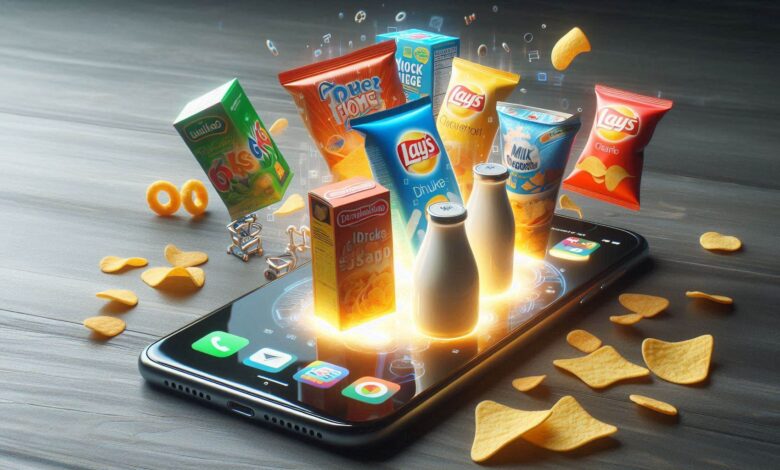
Packaging is no longer just cardboard and ink. It is becoming an interactive screen that responds to customer requests, introduces the brand and full product line, communicates with customers, collects consent-based data, and updates in real time. This shift is driven by the combination of augmented reality and artificial intelligence. In fact, we are watching a new consumer communication channel emerge, one that marketers will adopt at scale in the coming years — especially with mass-market AR glasses on the horizon.
Why this became possible
- AR has become far more accessible over the last three years thanks to no-code platforms that let practically anyone create AR content.
- WebAR is replacing app-based experiences for easier creation and simpler use. Those days of downloading a new app for every AR book or toy can finally be left behind.
- AI tools for content creation now span everything from 3D assets and their animation to voiceover and music for AR scenes.
Use cases you can picture instantly
- Food and beverages. Bring menus to life in AR with true-to-scale portions and ingredient callouts. Let visitors switch languages in seconds. On the shelf, animated labels explain origin, recipes, or pairings. Takeaway cups can trigger an AR barista with a step-by-step guide.
- Beauty and apparel. Let shoppers preview shades, finishes, and looks using model views or lightweight face filters. Turn packaging into a tutorial hub with step-by-step routines, care instructions, and style stories. And yes, online try-ons are already a classic.
- Book covers. Imagine a book that plays its own trailer when you scan the cover. In store, that surprise becomes a strong reason to buy right now. At home, it’s an easy moment to share on social media.
AI behind the scenes
You do not need a studio or a developer team to create this content. A growing set of AI tools helps teams build complete AR scenes quickly, even without design or coding skills.
- Rapid draft assets: text-to-3D, basic textures, and simple motion for fast mockups.
- AR scene scripts: prompts that become tooltips, quizzes, surveys, links to brand social channels, newsletter signup, AR promotions, and more. The same applies to creative and education use cases.
- Voice and localization: multi-language voiceover and subtitles to launch globally.
- Measure → improve: lightweight analytics show engagement with AR scenes, hotspots, clicks, and drop-offs so you can shorten steps or adjust content instead of guessing.
On MyWebAR, many of these helpers are available today, and the toolkit keeps growing.
Why this matters for brands
- Reach customers at the most decisive moment. Packaging is the first screen after the shelf and before use, when attention to the product is highest.
- Consent-based zero-party data. People share preferences through a game, quiz, or setup flow and get value immediately. And businesses receive data about their customers’ preferences.
- Flexibility without new print runs. Update offers, stories, and UGC carousels directly in the web scene. No label reprint required.
- Sustainability and transparency. Everything that never fits on small packaging can now be shown in depth: your brand values on video, 3D immersion — whatever you choose.
- Measurability. You can finally see packaging in numbers: scans, dwell time, conversions, repeat scans, geography, and contribution to sales. This is a new level of marketing — phygital marketing — where a completely physical product gains a digital layer you can work with.
Meet AI agents
A second wave is coming soon: AI agents that handle more complex analytics — tracking how people use AR on packaging and automatically suggesting changes.
What they can do:
- Detect issues like slow loads or bottlenecks and suggest lighter flows.
- Recommend copy edits or AR scene adjustments when completion rates drop.
- Tune offers based on stated preferences.
- Summarize thousands of interactions into clear insights.
In short, agents turn packaging into a self-optimizing channel, where improvements are driven by a new kind of analytics.
Beyond marketing
A “talking” box is not just a conversion tool. It is accessibility for people who struggle with tiny text or complex instructions. It is verification for those who value authenticity. It is a new kind of experience for shoppers, including children. Imagine a child chatting with the mascot cow of their favorite milk brand — a memory that lasts. It is also a civic nudge toward better resource use.
What’s next?
A brief reminder: AR scenes created by non-developers are already available to anyone with a smartphone, and analytics show there are about 7 billion smartphones in use worldwide (https://www.statista.com/statistics/330695/number-of-smartphone-users-worldwide/). While teams debate positioning, the box is already speaking. With WebAR it can launch 3D content, personalize offers, collect consent-based data, explain environmental impact, and update information without reprinting. With AI, content is produced in hours or days rather than months, and with AI agents it continues to improve on its own. Everyday objects are becoming communication channels. Packaging is the first thing we notice. Just imagine where this channel will be in two to three years, when the era of mass-market AR glasses begins.



